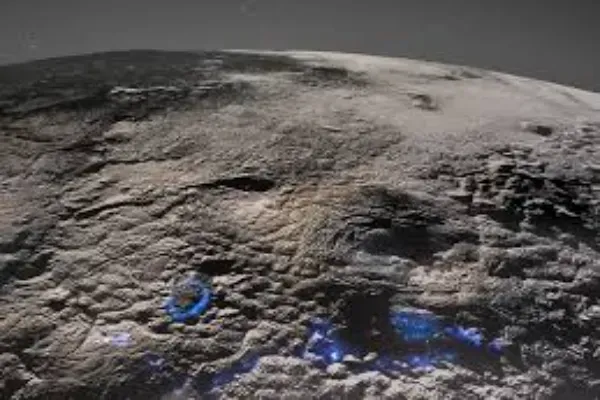10 Facts About Pluto
Pluto Rediscovered: 10 Facts About Pluto, the Dwarf Planet at the Edge of the Solar System
Pluto was once considered the ninth planet in our solar system, reaching dwarf planet status in 2006. Despite the reclassification, Pluto remains the most fascinating and mysterious celestial body in our universal community. Embark on a journey to discover the planet with 10 facts about Pluto that highlight its unique features and ongoing exploration of this distant world.
1. Kuiper Belt Dwellers: Pluto resides in the Kuiper Belt, a large region of the solar system beyond Neptune inhabited by icy particles. This belt is an archaeological repository that provides insight into the formation of the early solar system.
2. Dwarf planet classification: In 2006, the International Astronomical Union (IAU) redefined the criteria for classifying planets, in which Pluto was again classified as a dwarf planet, failing to meet the criteria essentially because it cannot clear the orbit of other debries.
3. Charon, Pluto’s moon: Pluto has a large moon called Charon, which was discovered in 1978. Compared to Pluto, Charon is unusually large and is often considered a dual system due to gravity and the effects of the two factors on each other.
4. Moon family: In addition to Charon, Pluto has four small moons—Styx, Nix, Kerberos, and Hydra. These moons were discovered by the Hubble Space Telescope in the years following the beginning of the 21st century.
5. Heart of Ice: A unique heart-shaped region marked on the surface of Pluto is called Tombaugh Reggio in honor of the discoverer of Pluto, Clyde Tombaugh. This heart of ice is made up of nitrogen, methane, and carbon monoxide.
6. Hubble Glimpse: Much of what we know about Pluto’s moons and objects comes from the Hubble Space Telescope. This led to important insights, including the discovery of other moons and the study of Pluto’s climate variability.
7. New Horizons Mission: In 2015, NASA’s New Horizons spacecraft conducted a historic flyby of Pluto, capturing photographs and details of the dwarf planet and its moons and revealing a variety of it exists on the surface of the New Horizons, as high mountains and vast plains of frozen nitrogen.
8. Pluto’s atmosphere: Despite its distance from the sun, Pluto has a thin atmosphere composed mainly of nitrogen, methane, and carbon monoxide. As Pluto orbits the sun, this atmosphere changes seasonally, and during its cold periods, the air is cold and snowy above.
9. Highly Eccentric Orbit: Pluto follows a highly circular and curved orbit around the Sun, making its journey around the Solar System unusual. This orbit puts it closer to the sun than Neptune in its orbit.
10. Ongoing Research: Although the new discoveries have provided us with remarkable insights, Pluto continues to be the target of scientific interest. Proposed future missions like the Pluto Kuiper Explorer aim to deepen our understanding of this distant planet and the broader dynamics of the Kuiper Belt.
Unveiling the Mysteries of the Dwarf Planet Through 10 Facts About Pluto

Once an important member of the solar system’s series of planets, Pluto now occupies a unique position as a dwarf planet and is of interest to astronomers and space enthusiasts alike. One of its defining features is that it is located in the Kuiper Belt, filled with icy particles outside Neptune that offer clues about the early solar system. This observation provides insight into the formation and evolution of our cosmic environment.
As part of the Kuiper Belt cosmic cluster, Pluto is not alone; it is orbited by a family of moons, including the major Charon and minor companions Styx, Nix, Kerberos, and Hydra. A heart-shaped surface world called Reggio was revealed. This icy heart made of nitrogen, methane, and carbon monoxide ice enhances the fascinating story of Pluto’s dynamic and diverse qualities.
The dwarf planet’s thin atmosphere consists mainly of nitrogen, methane, and carbon monoxide; Pluto changes seasons as it orbits the sun; the air experiences cold periods; and ice forms in front of it. In 2015, when flying an unprecedented transit, New Horizons revealed the incredible diversity of Pluto’s landscape, featuring high mountains and vast plains of frozen nitrogen.
Despite its small size, Pluto’s highly dramatic orbits bring it on unique journeys around the Sun, sometimes putting it closer to the Sun than Neptune on particular parts of its orbital path. Continued effort to explore Pluto, including proposed missions such as the Pluto-Kuiper probe, emphasizes the enduring quest for deeper insight into the mysteries beyond the sphere’s outer edge.
Despite its small size and remoteness, Pluto captures our imagination and fuels scientific research. As our understanding of this icy dwarf planet evolves, these 10 facts about Pluto stand as testament to the dynamic nature of our solar system and the discoveries that await us at the edge of the cosmic frontier.